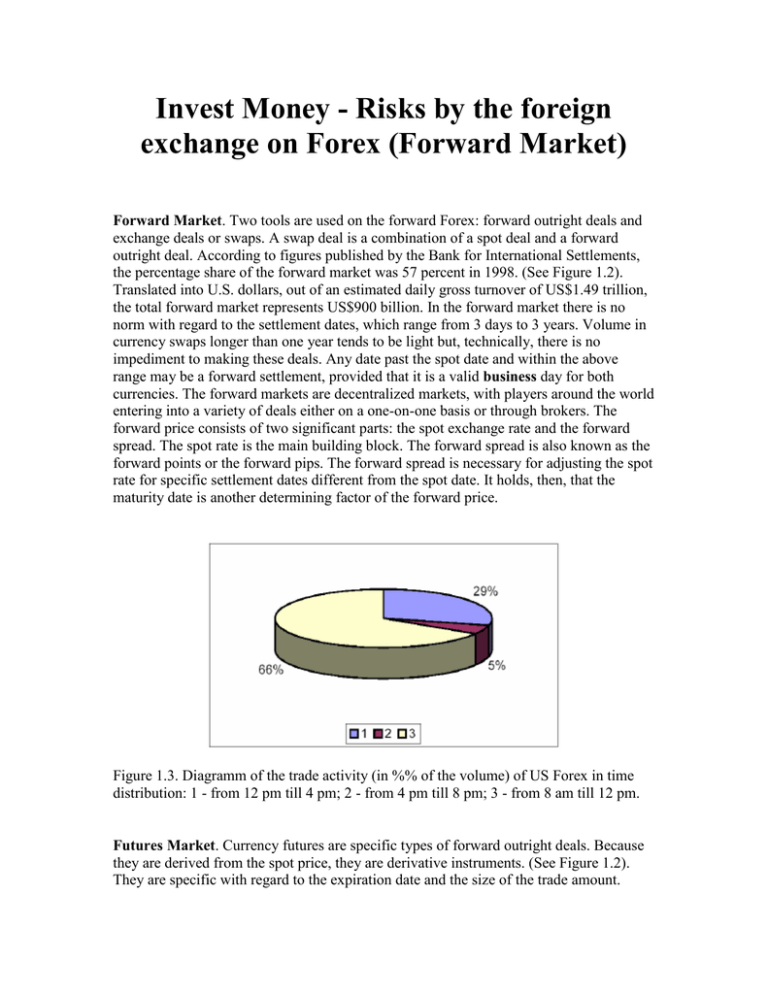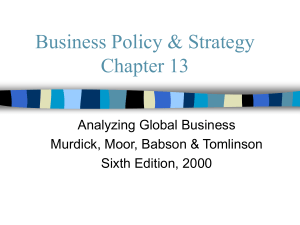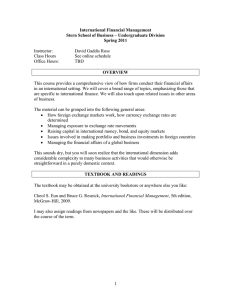Invest Money - Risks by the foreign
advertisement

Invest Money - Risks by the foreign exchange on Forex (Forward Market) Forward Market. Two tools are used on the forward Forex: forward outright deals and exchange deals or swaps. A swap deal is a combination of a spot deal and a forward outright deal. According to figures published by the Bank for International Settlements, the percentage share of the forward market was 57 percent in 1998. (See Figure 1.2). Translated into U.S. dollars, out of an estimated daily gross turnover of US$1.49 trillion, the total forward market represents US$900 billion. In the forward market there is no norm with regard to the settlement dates, which range from 3 days to 3 years. Volume in currency swaps longer than one year tends to be light but, technically, there is no impediment to making these deals. Any date past the spot date and within the above range may be a forward settlement, provided that it is a valid business day for both currencies. The forward markets are decentralized markets, with players around the world entering into a variety of deals either on a one-on-one basis or through brokers. The forward price consists of two significant parts: the spot exchange rate and the forward spread. The spot rate is the main building block. The forward spread is also known as the forward points or the forward pips. The forward spread is necessary for adjusting the spot rate for specific settlement dates different from the spot date. It holds, then, that the maturity date is another determining factor of the forward price. Figure 1.3. Diagramm of the trade activity (in %% of the volume) of US Forex in time distribution: 1 - from 12 pm till 4 pm; 2 - from 4 pm till 8 pm; 3 - from 8 am till 12 pm. Futures Market. Currency futures are specific types of forward outright deals. Because they are derived from the spot price, they are derivative instruments. (See Figure 1.2). They are specific with regard to the expiration date and the size of the trade amount. Whereas, generally, forward outright deals-those that mature past the spot delivery datewill mature on any valid date in the two countries whose currencies are being traded, standardized amounts of foreign currency futures mature only on the third Wednesday of March, June, September, and December. The following are characteristics of currency futures that make them attractive. They are open to all market participants, individuals included. It is a central market, just as efficient as the cash market, and whereas the cash market is a much decentralized market, futures trading takes place under one roof. It eliminates the credit risk because the Chicago Mercantile Exchange Clearinghouse acts as the buyer for every seller, and vice versa. In turn, the Clearinghouse minimizes its own exposure by requiring traders who maintain a nonprofitable position to post margins equal in size to their losses. Although the futures and spot markets trade closely together, certain divergences between the two occur, generating arbitraging opportunities. Gaps, volume, and open interest are significant technical analysis tools (See Chapter 4) solely available in the futures market. Because of these benefits, currency futures trading volume has steadily attracted a large variety of players. Because futures are forward outright contracts and the forward prices are generally slow movers, the elimination of the forward spreads will transform the futures contracts into spot contracts. For traders outside the exchange, the prices are available from on-line monitors. The most popular pages are found on Bridge, Telerate, Reuters, and Bloomberg. Telerate presents the currency futures on composite pages, while Reuters and Bloomberg display currency futures on individual pages that show the convergence between the futures and spot prices. Options Market. A currency option is a contract between a buyer and a seller that gives the buyer the right, but not the obligation, to trade a specific amount of currency at a predetermined price and within a predetermined period of time, regardless of the market price of the currency; and gives the seller, or writer, the obligation to deliver the currency under the predetermined terms, if and when the buyer wants to exercise the option. More factors affect the option price relative to the prices of other foreign currency instruments. Unlike spot or forwards, both high and low volatility may generate a profit in the options market. For some, options are a cheaper vehicle for currency trading. For others, options mean added security and exact stop-loss order execution. Currency options constitute the fastest-growing segment of the foreign exchange market. As of April 1998, options represented 5 percent of the foreign exchange market. (See Figure 1.4). The biggest options trading center is the United States, followed by the United Kingdom and Japan. Options prices are based on, or derived from, the cash instruments. Often, however, traders have misconceptions regarding both the difficulty and simplicity of using options. There are also misconceptions regarding the capabilities of options. Trading an option on currency futures will entitle the buyer to the right, but not the obligation, to take physical possession of the currency future. Unlike the currency futures, buying currency options does not require an initiation margin. The option premium, or price, paid by the buyer to the seller, or writer, reflects the buyer's total risk. However, upon taking physical possession of the currency future by exercising the option, a trader will have to deposit a margin. Figure 1.4. Market share of the currency options (in %% of the volume): 1 - OTC; 2 organized exchanges. The currency price is the central building block, as all the other factors are compared and analyzed against it. It is the currency price behavior that both generate the need for options and impacts on the profitability of options.







